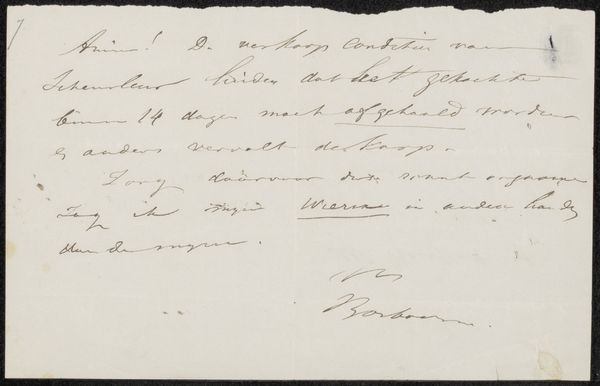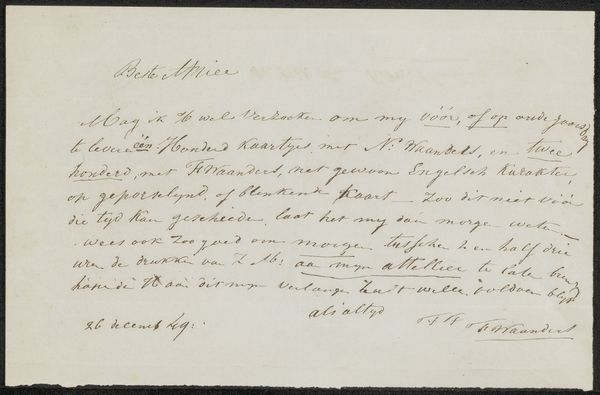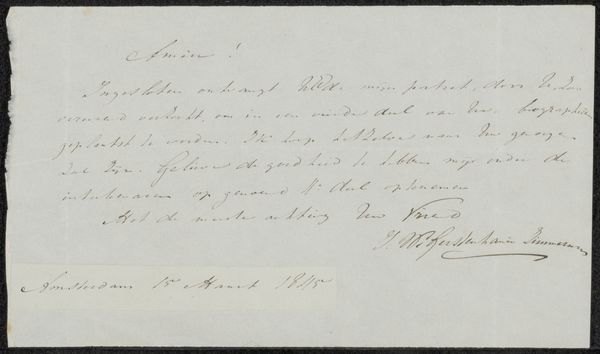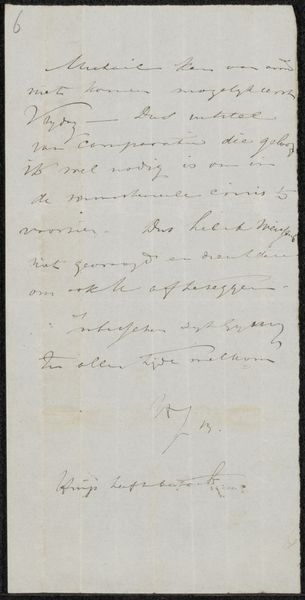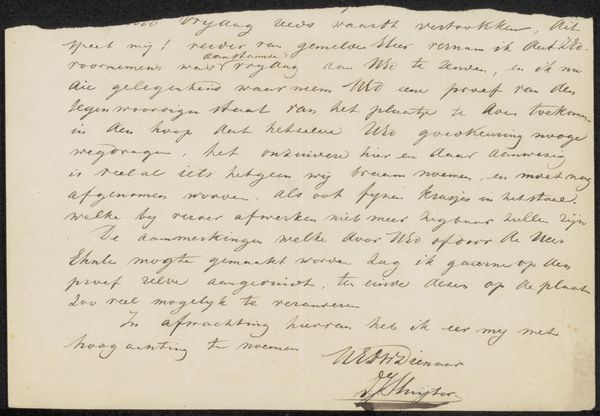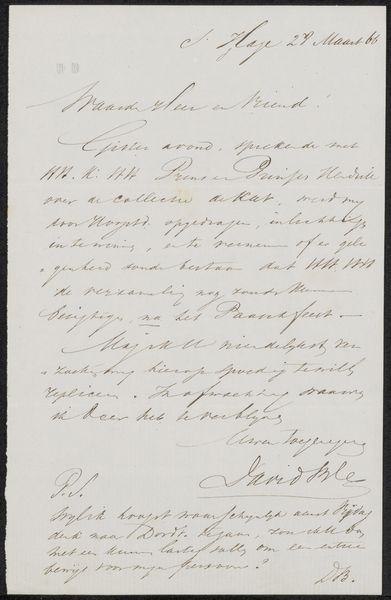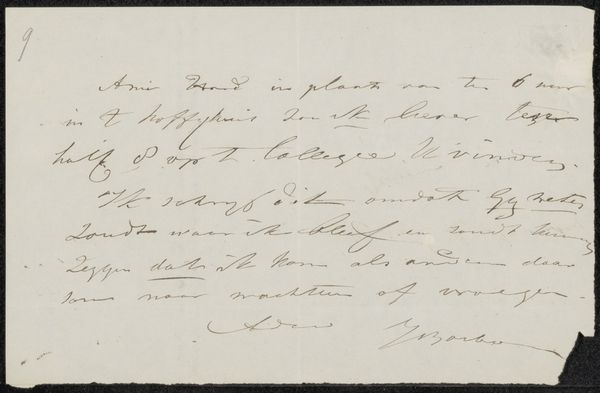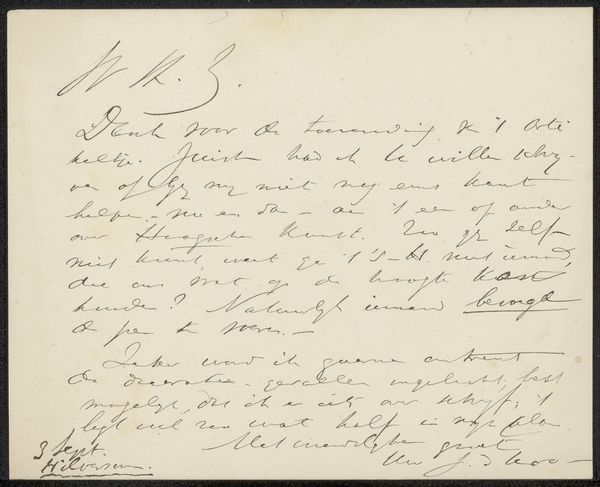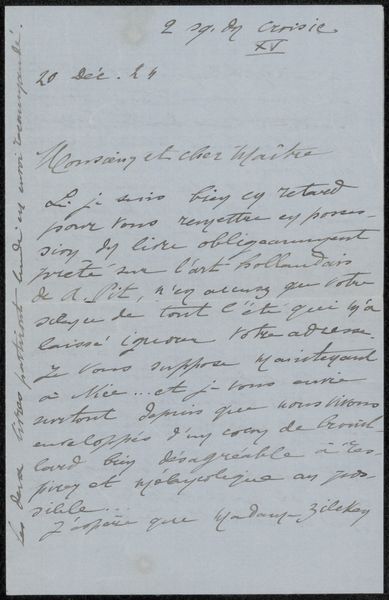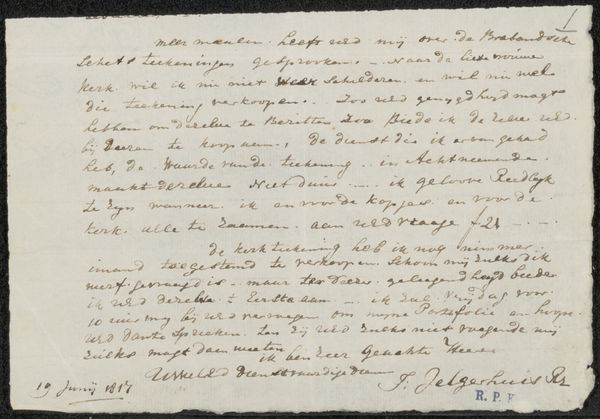
drawing, paper, ink
#
drawing
#
dutch-golden-age
#
sketch book
#
paper
#
personal sketchbook
#
ink
#
ink drawing experimentation
#
sketchbook drawing
#
watercolor
#
calligraphy
Copyright: Rijks Museum: Open Domain
Curator: This unassuming piece is titled "Brief aan Lambertus Hardenberg (1822-1900)," dating from 1827 to 1891, created by Johannes Bosboom. Editor: The first thing that strikes me is the intimacy. It’s on a small scrap of paper, and the handwriting seems very personal and informal, as though dashed off in haste. Curator: Absolutely. Bosboom crafted it using ink and watercolor on paper. Given its appearance, we can fairly safely assume this served as something like a preliminary study or personal sketchbook entry, giving us unique insight into the mind of the artist. This likely means it lacks the kind of rigid posing one would expect. It’s spontaneous, not for public consumption. Editor: The visual weight seems significant. It makes me wonder about the significance of written communication during that era and its relationship with community formation. Curator: The content of the letter is pretty mundane by all accounts, but is itself symbolic: It reads, more or less, as just everyday chitchat; a quick line to Lambertus to ask whether they can reschedule for a meetup over lunch and a little chat, that seems to have been set up originally for the previous Friday, because the writer had some errands. Editor: Mundane it may be, yet that's the kind of art I really appreciate. Ordinary communications taking on cultural symbolism from sheer temporal displacement. It reminds us of the human touch that digital communications are leaving behind, that is very personal and vulnerable at once, particularly resonant when the text fades, mirroring memory's own decay. What will that mean for us? Curator: True, the medium itself becomes significant. In a time before instant communication, such a handwritten note would carry more weight, representing intentionality and connection. The Dutch Golden Age calligraphy itself, beyond the message, embodies the era's commitment to artistry in everyday life, as ordinary objects carried symbolic, personal meaning. Editor: Ultimately, it's a powerful reminder of lives lived and connections maintained, all captured in this one little piece of ephemera. Curator: I concur, this work makes us ask so much about historical artistic expression and makes it into an amazing portal for contemplating these complex themes.
Comments
No comments
Be the first to comment and join the conversation on the ultimate creative platform.
